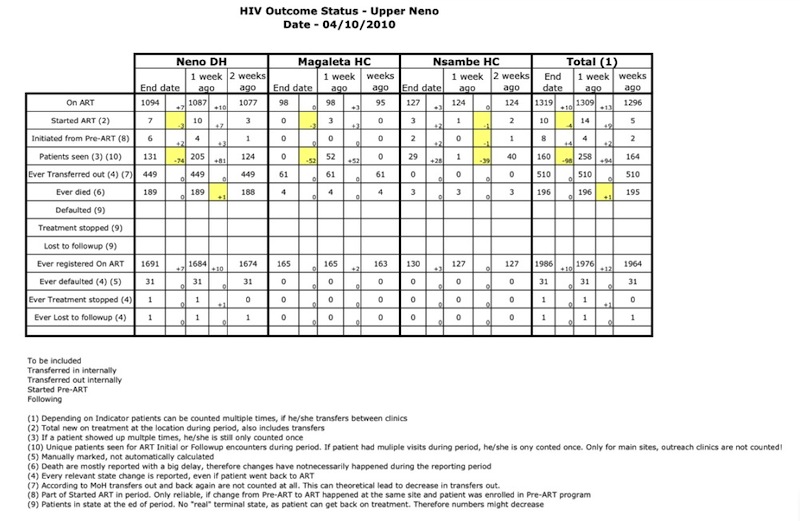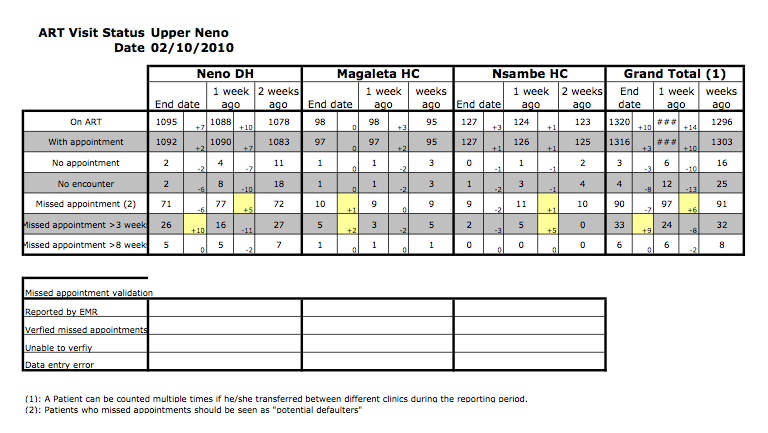Some examples and ideas and notes from real-life reports done with the Reporting module.
| Table of Contents |
|---|
Program enrollment outcome (PIH Malawi)
Program enrollments together with Workflows can indicate the current status of a patient for a specific medical problem like HIV or TB. Using this information to provide a regular feedback to the medical staff can help increasing the use of OpenMRS and improve the medical care. E.g. presented on a weekly basis enables to see how and where the clinic is likely to be going. The following example is renderer by Excel.
...
Note: Even though this report depends to some extends on the Concept Dictionary of PIH Malawi, it should be easy to adopt or to generalize. It also depends on the Program Location Module.
Missed appointments (PIH Malawi)
If OpenMRS is used to keep track of patient appointments, a status overview of missed appointments is useful.
Scripting setup of Reports
The Reporting module already provides a generic UI to define and to view reports. Even though this is good for an adhoc approach, to get familiar with the Reporting module in general and specific requirements for reports, this is also "click-intense". Besides this for now these reports are bound to a specific OpenMRS database installation (unless clever ways of myqldump and -load are used). If reports need to be
- version controlled,
- shared between different installation (like test and production env), or
- adopted for slightly different usecases while maintaining the general structure,
then it might make sense to externalize the creation of the various report elements. Besides the UI everything is accessible through the Java-API. With some Java knowledge, the creation of Cohort queries, Indicators and Report Definition can be scripted.
The "deployment" of reports can be done in 2 different ways:
- Through a module, which provides the Administration feature to set up (and remove) persisted report elements (good for production systems).
- Through a (misused) Junit testcase, which can easily be invoked from the local development environment (good for development and testing).

